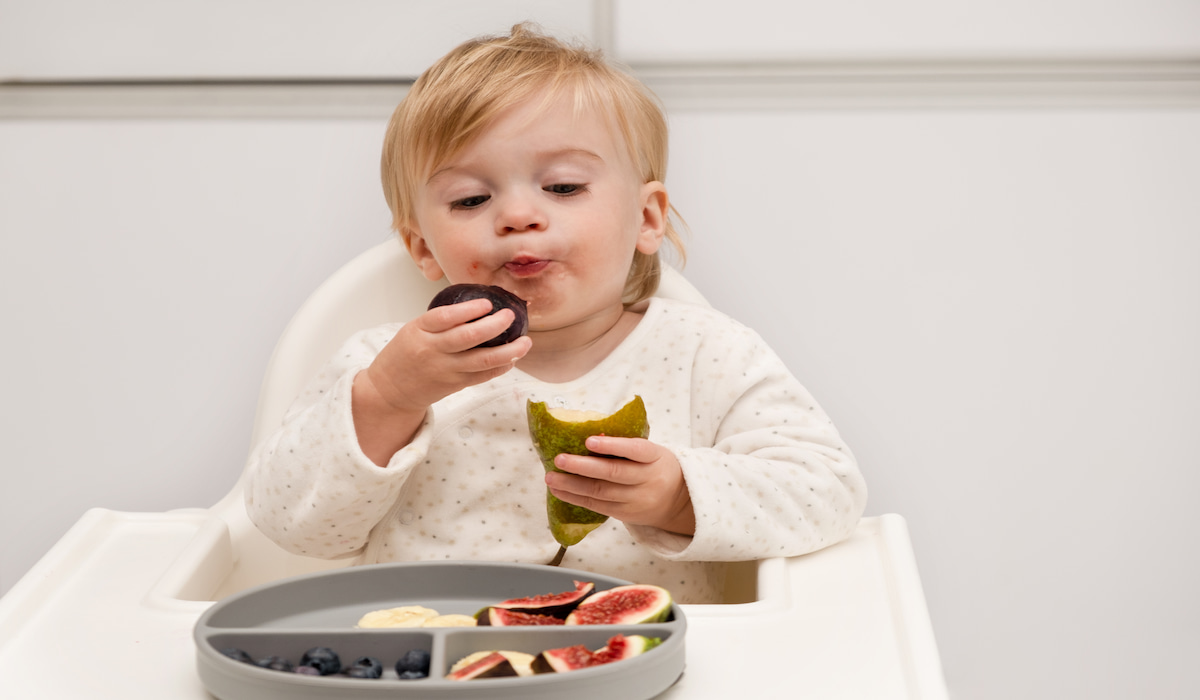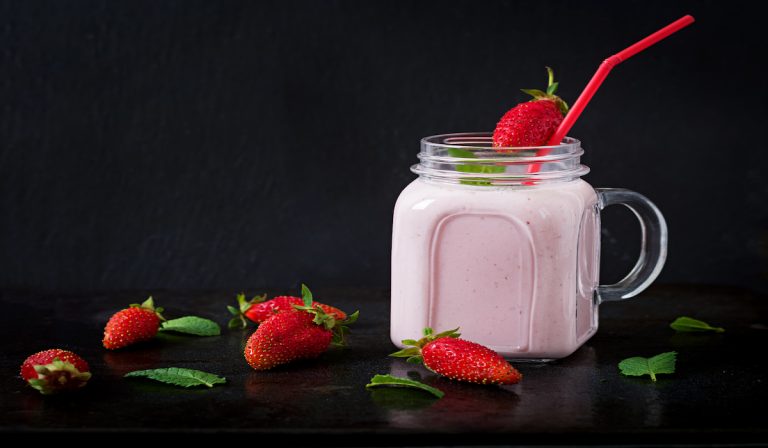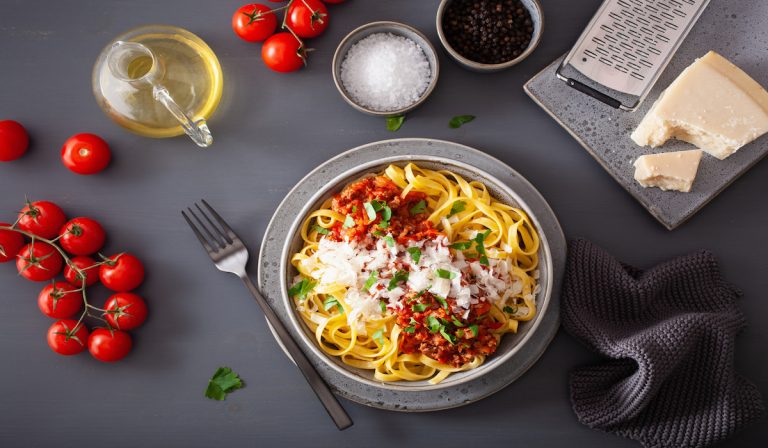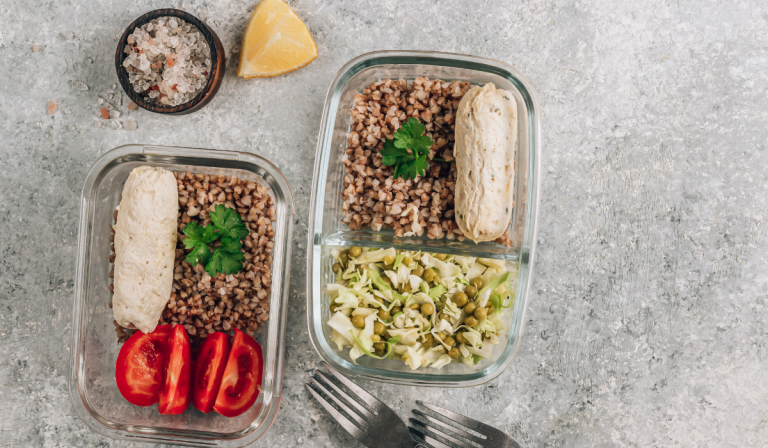9 Meal Ideas for A Two Year Old Toddler (Read To Know!)
We get where you’re coming from. Meals aren’t the hardest things to come up with– often we know exactly what we’re craving or looking forward to eating for dinner! However, it’s different with kids, especially toddlers.
As developing little humans, toddlers need certain food groups, vitamins, and minerals in order to grow into healthy, well-functioning adults.
Of course, as adults we shouldn’t think we don’t need the same vitamins in our bodies– we do! But as growing children babies, toddlers and children need special attention taken to their diets or they could have health problems throughout their lives.
So we know what we want to eat, and the toddlers know what they want to eat, but we don’t know what the toddlers– and we– should eat.
Prepping supper was a lot easier before you had to think about the long-term welfare of a toddler, but maybe it’s for the best.
You can learn a bit more about nutrition and apply it to your diet as well as your child’s. And maybe, once we learn what we should be feeding our little ones to grow healthy and strong, we need even more ideas.
Yes, I know what they need to be eating, but they don’t want to!
The food tastes bad, or looks weird, or smells funky, or just doesn’t seem fun or interesting enough to try. That’s why you’ve come to us, we can help you out!
You shouldn’t be relenting and taking the Doritos out of the cupboard, and you shouldn’t be refusing to let your child leave the table until they’ve eaten their food. Read on to learn what to feed a toddler, and even more pressing: how.
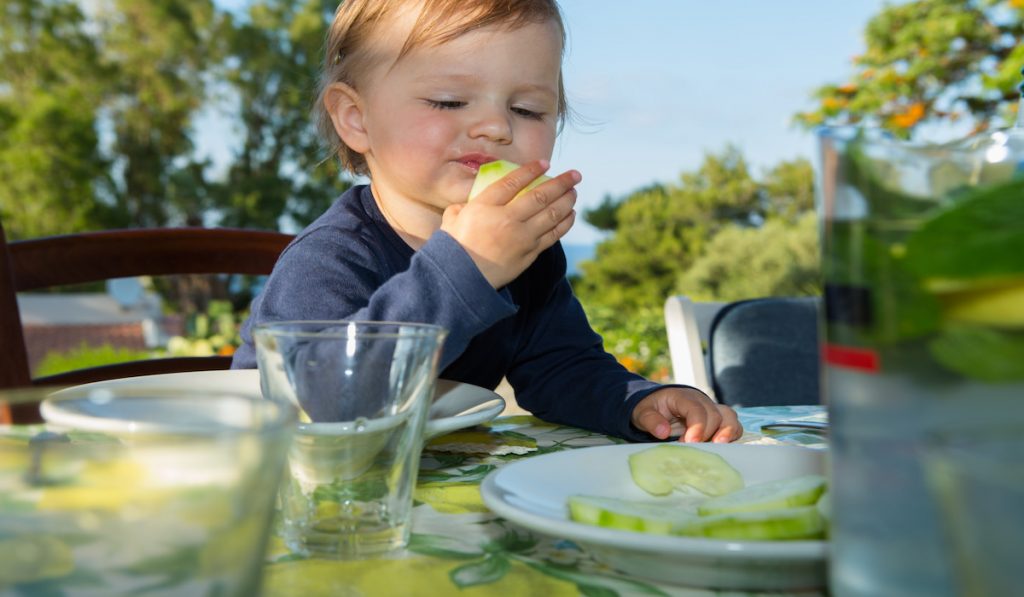
Nutritional Needs for Growing Toddlers
Toddlers from ages two to four should be consuming food five to six times a day. Three meals plus two to three snacks every day.
They should be consuming between 1,000 to 1,600 calories each day as well (closer to 1,600 for little boys)– which seems like a lot for such small people, but they are growing fast!
Within that 1,000 to 1,600 calories, there are certain food groups that should be met to ensure the greatest nutrition.
First, vegetables: two cups a day.
Fruit: one to one and a half cups daily.
Dairy should be around two or two and a half (got to make those bones strong!).
For protein, aim for two to five ounces, and three to five ounces of whole grains. These portions are every day!
So in planning your meals, make sure to incorporate this amount across their meals so that they’ve reached their dietary needs by the end of dinner (or bedtime snack).
You don’t want to give them a salmon filet for lunch and a bowl of spinach for dinner, though! What kid would eat that?
In order to get in their daily needs while still giving variety to their meals, including a small portion of each group in each of their meals.
If you’re looking at their plate, it should consist of half veggies and fruit. One quarter should be whole grains, and the last quarter should be protein.
A serving of dairy can be on the side, such as a glass of milk. And as growing kids, whole is always important. They want whole milk, not half milk! They need all those nutrients!
Whole fruits instead of fruit juices, which only capture the essence of fruit with a bunch of water and sugar mixed in.
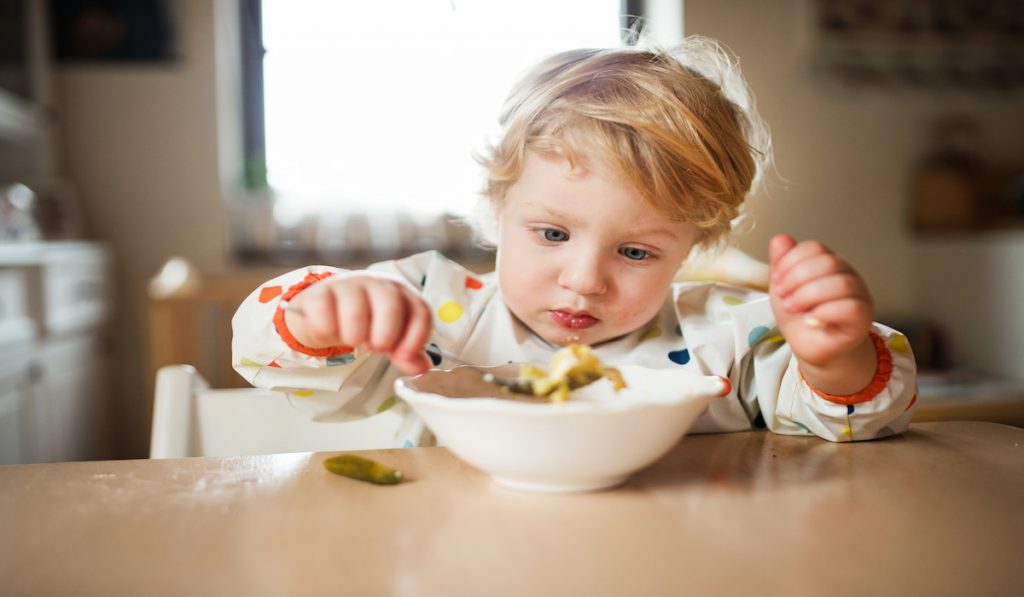
Tips For a Successful Day of Meals
Now we know the core elements of what makes a good toddler meal. Next up, we’re going to talk about little tricks and life hacks that can make prepping the day’s or even the week’s meals so much easier– and more successful!
Here are some non-food-specific ideas to get your kids eating their veggies.
First off, planning! Toddlers eat five to six times a day, which constitutes eating every three or hours or so. They’re going to be hungry, and banging down your door, but if you don’t have your meals already prepared or at least at easy access, you may give in and hand them the cupcakes– exactly the opposite of what you want!
It’s not wise to develop habitual snack times, because then children won’t be listening to their bodies to know when they’re hungry, they’ll be watching the clock.
Meals eaten as a family are of course allowed to be at certain times, though mixing it up is never a bad thing!
Instead of planning a two o’clock snack, just prepare them ahead of time and have them ready to go in the fridge, pantry, or purse when your child comes asking for food.
Going off of that, decide what foods they’ll be eating throughout the week on your decided shopping day. Toddlers don’t need a brand new snack every time, they just need one that they will enjoy and will give them the nutrients they need.
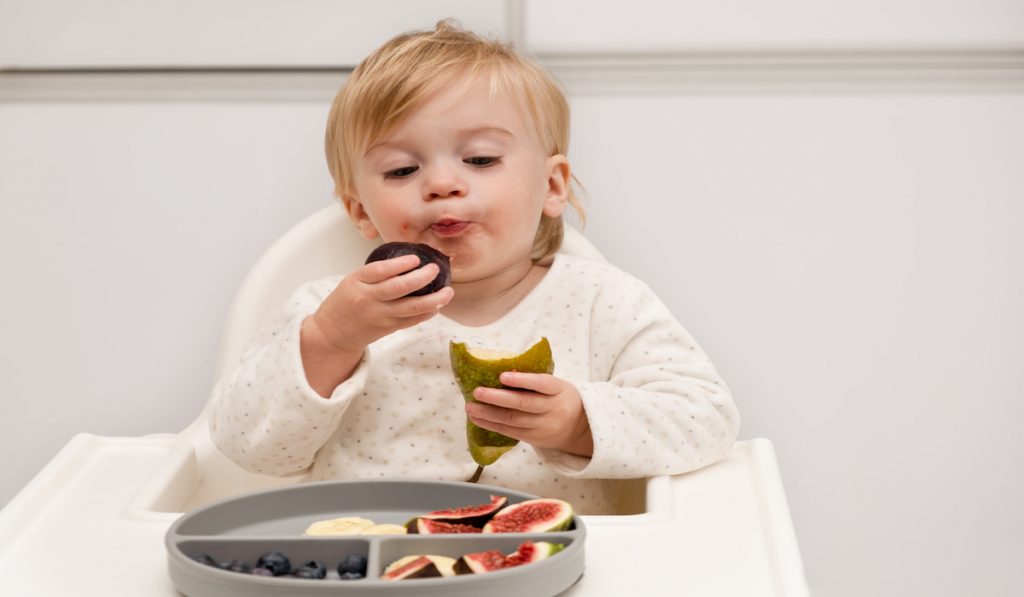
Decide on two or three different snacks for the whole week, and give them one of each every day.
Once you’ve decided and bought them, prepare them! Get them all cut up or mixed together and stored in little portions so that all you have to do is grab them out when your child asks.
For meals, try to have your child eat similar foods to the ones you and the rest of the family are eating.
Children are masters at observation, and often learn most of their habits from watching and copying their parents. So, be good examples to your kid and eat the same healthy foods as them!
If they’re having broccoli for dinner, so are you, and vice versa! Children will be much more likely to want to eat what you give them if you’re eating it too, and if you’re enjoying it.
You can give them simplified versions of the meal if need be, but the general idea of what they are eating should be the same as what you are. They should be able to identify the same foods, and know that if mommy’s eating it, I can too!
Now for the How: Meal Ideas for Your Two Year Old!
We’ve gotten to it folks: we’ve learned some preparation tricks for successful toddler meals, but we need specifics!
We know what foods to feed them, the portion for each meal, and how to prep for success, but we need inspiration! What combinations of food would appeal to a two-year-old without letting them eat nachos and donuts all the time? Let’s look!

Breakfast Ideas for Toddlers
Four-ingredient Pancakes
Yes, just the word “pancakes” gets everyone excited, even you! These are so simple you can make them in ten minutes, for you and for your toddler!
(Or you can have regular pancakes, but they’ll think you’re eating the same thing.)
The ingredients are one overripe banana (for sweetness), one large egg, and some whole wheat flour.
- Mash up the banana and mix in the egg and flour to get the right pancake consistency.
- Then, add something exciting inside! Maybe bits of strawberry, or the classic blueberries, or chocolate chips for special occasions.
- Make little tablespoon-sized pancakes on the griddle and serve with more fresh fruit!
Avocado Toast for toddlers
- Take one piece of whole-grain bread, a ripe avocado, and a hard-boiled egg.
- Mash the avocado and spread it onto the toasted bread.
- Slice up the hard-boiled egg into little pieces, and spread it out over the avocado.
- Add a little salt and pepper if you’d like, cut into toddler-size pieces, and put it on the high chair!
Yogurt Bark made with Peanut Butter and Banana:
- Combine Greek yogurt, natural peanut butter, and banana chunks (or mash it into the yogurt and peanut butter).
- Spread on a cookie sheet and freeze.
- When frozen, cut into squares and give one or two to your tot!
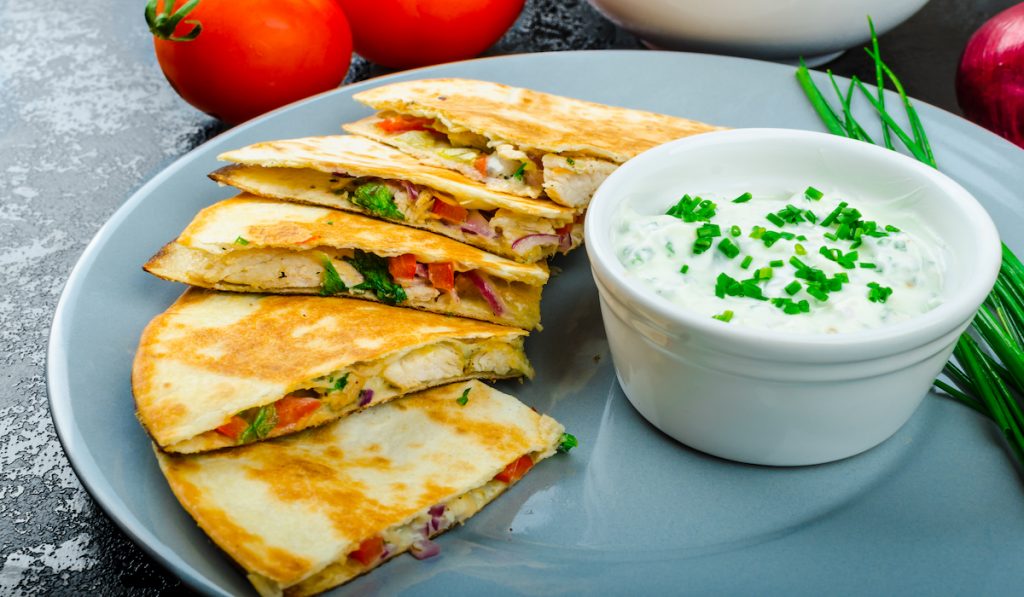
Lunches for the Little Guys
Ham, Spinach, and Cream Cheese Rollups
- Take a whole grain tortilla and spread cream cheese on it.
- Then, lay pieces of spinach across the cream cheese, followed by slices of ham.
- Roll the tortilla up, and slice so that there are a bunch of little tortilla spirals (like cinnamon rolls).
Chicken Pesto & Kale Quesadillas
- Spread pesto on half of a whole wheat tortilla, and cover the pesto with shredded chicken and kale.
- Sprinkle cheese on top.
- Fold the other half of the tortilla on top, and cook as usual in a frying pan.
- Slice into small triangles and serve.
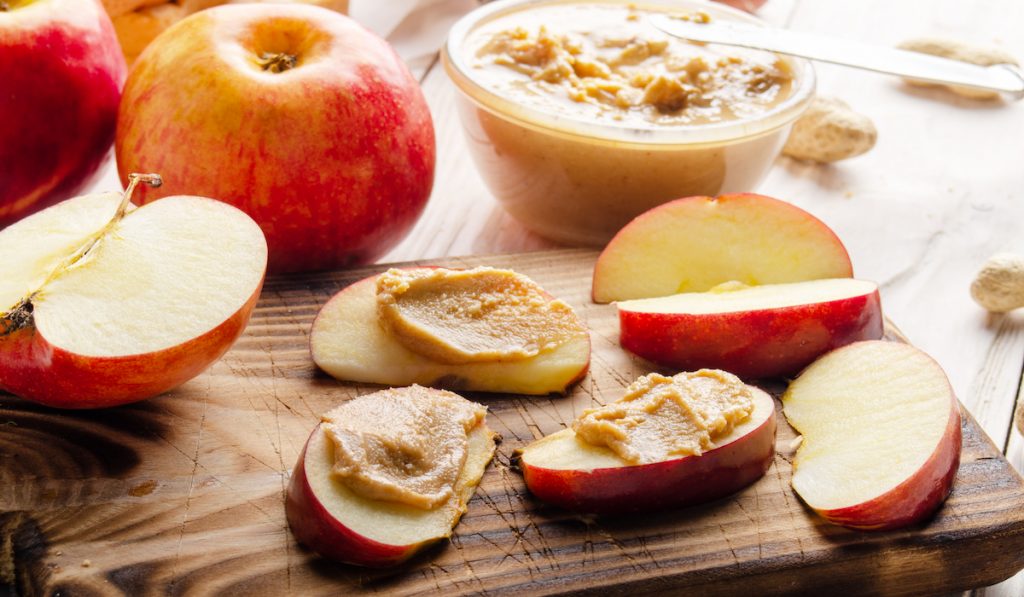
Super Snacks!
Ham, Cheese, and Crackers
A simple and beloved go-to! Choose crackers that are low in sugar and high in fiber, such as whole-grain versions. Get small cheese slices and fold slices of ham to go on top of the cracker!
Apples and Peanut Butter
Ever heard of ants on a log? Well, you can recreate this iconic snack with all sorts of foods! You can use pieces of cut celery, apples, or even bananas. Smear some peanut butter over each piece, and sprinkle with raisins.
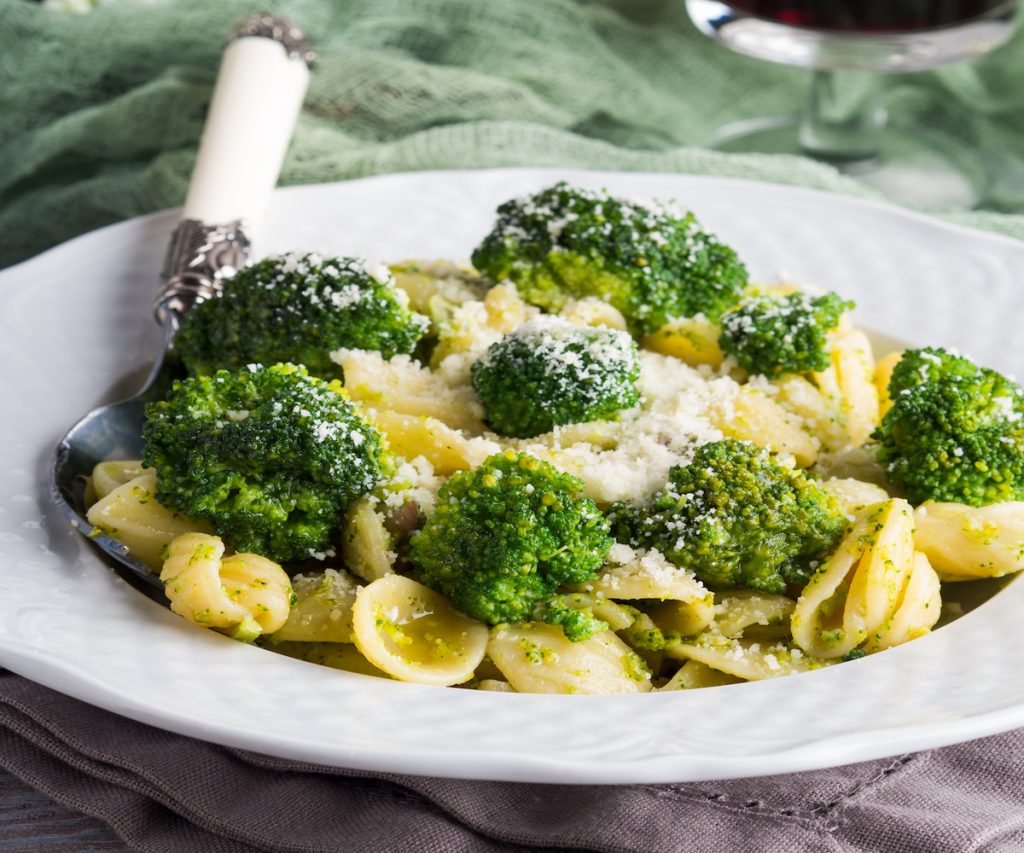
Dinners That Don’t Consist of Dino Nuggets
Rainbow Pizza
Take whole wheat bagels, naan bread, or homemade dough and cover with pasta sauce and cheese. Then, add whatever healthy toppings you’d like! You can do shredded chicken, pieces of spinach, or even cut pieces of peppers you can pass off as “sprinkles.” Be creative!
Cheesy Broccoli Pasta
Boil whole-grain noodles on the stove, while steaming tiny pieces of broccoli in another pot. Combine, melting in cheese and seasoning with garlic and salt. It’s like mac and cheese, but much healthier!
The Bottom Line
Whether you’re new to taking care of toddlers or just looking to expand your knowledge, hopefully, this article gives you the necessary information to understand what is needed for a healthy toddler-age diet, tips for achieving your health goals, and recipe ideas to get you started.
As you go on, you’ll find new ideas and create your own, adapting to what your child enjoys and what you enjoy prepping as well. I know the twos can be terrible, but hopefully finding a great system for meals will make life a little easier and enjoyable, so you can sit back and treasure these moments watching your little girl or boy growing up.
